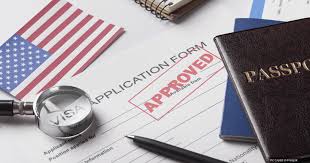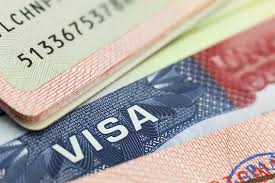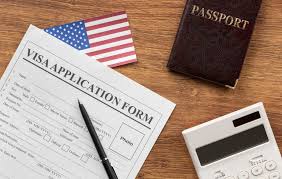How to Apply for a U.S. Tourist Visa: Step-by-Step Guide for Travelers

A U.S. tourist visa, commonly referred to as the B-2 visa, allows foreign nationals to enter the United States for leisure, tourism, or medical treatment. This visa is typically used for individuals who want to visit family and friends, explore the country’s diverse attractions, or seek medical care that is not available in their home country.
The B-2 visa is a non-immigrant visa, meaning that applicants must prove their intent to return to their home country after their visit. The application process involves completing required forms, providing supporting documents, and attending an interview with a U.S. consular officer.
In this article, we will guide you through the process of applying for a U.S. tourist visa, including eligibility requirements, the application steps, and helpful tips to ensure a smooth process.
Who Needs a U.S. Tourist Visa?
Most visitors who wish to travel to the U.S. for tourism, vacation, or medical treatment must apply for a B-2 visa. However, some nationals of countries that are part of the Visa Waiver Program (VWP) may be eligible to enter the U.S. without a visa for short stays (up to 90 days) for tourism or business purposes. To be eligible for the Visa Waiver Program, travelers must meet certain requirements, such as having an electronic passport and applying for authorization through the ESTA (Electronic System for Travel Authorization) before their trip.
If you are not from a Visa Waiver Program country, you will need to apply for a B-2 tourist visa.
Eligibility Requirements for a U.S. Tourist Visa
To qualify for a U.S. tourist visa, applicants must meet several key requirements. While each individual case may be unique, here are some common eligibility criteria:
Purpose of Visit: You must prove that your trip to the U.S. is for leisure, tourism, or medical treatment. If you plan to visit family or friends, you will need to provide evidence of the relationship and the purpose of your visit.
Intent to Return to Your Home Country: Since the U.S. tourist visa is a non-immigrant visa, you must demonstrate that you intend to return to your home country after your visit. This can be done by showing ties to your home country, such as employment, property ownership, or family commitments.
Sufficient Financial Resources: You must show that you have enough financial resources to support yourself during your stay in the U.S. This includes covering travel expenses, accommodation, food, and other living costs.
No Immigrant Intent: The U.S. government requires that applicants prove they do not intend to immigrate to the U.S. on a permanent basis. This is typically done by demonstrating strong ties to your home country and proving that your trip is temporary.
The U.S. Tourist Visa Application Process
The process of applying for a U.S. tourist visa involves several important steps. Below, we outline each step in detail:
Step 1: Complete the DS-160 Form: The first step in applying for a U.S. tourist visa is to complete the DS-160 form, which is the online application form for U.S. visas. The DS-160 form collects personal information, travel details, and other relevant information about your background. After submitting the form, you will receive a confirmation page with a barcode, which you will need for your visa interview.
Step 2: Pay the Visa Application Fee: The visa application fee for a B-2 tourist visa varies by country and is typically paid online or at a designated bank. The fee is non-refundable, so it is important to make sure you are eligible for the visa before paying the fee. Keep the receipt as proof of payment.
Step 3: Schedule Your Visa Interview: After completing the DS-160 form and paying the visa application fee, you need to schedule a visa interview at the U.S. embassy or consulate in your country. Visa interviews are typically required for individuals between the ages of 14 and 79, though there are some exceptions.
Step 4: Gather Required Documents: Before your visa interview, you will need to gather several documents. Commonly required documents include:
- Passport that is valid for at least six months beyond your intended stay in the U.S.
- DS-160 confirmation page with barcode.
- Visa application fee receipt.
- A passport-sized photo that meets U.S. visa photo requirements.
- Proof of financial support to show that you can afford your trip (bank statements, pay stubs, or sponsorship letters).
- Proof of ties to your home country, such as a job, property, or family obligations.
- Travel itinerary with details of your planned trip to the U.S.
Step 5: Attend the Visa Interview: The visa interview is one of the most important parts of the application process. During the interview, a U.S. consular officer will ask you questions about your trip, your financial situation, and your ties to your home country. It is essential to answer all questions truthfully and provide supporting documents to back up your claims.
Step 6: Wait for Visa Approval: After your interview, the consular officer will inform you if your visa is approved or if additional processing is needed. If your visa is approved, the embassy or consulate will place a U.S. tourist visa stamp in your passport. The processing time may vary depending on the location, so it’s important to plan ahead.
Step 7: Receive Your Visa and Travel to the U.S.: Once your visa is approved and processed, you will be notified about when and how you can collect your passport. With the tourist visa in hand, you can travel to the U.S. and enjoy your visit for the duration allowed by your visa, typically up to six months.
Common Reasons for Denied U.S. Tourist Visas
While many people successfully obtain a U.S. tourist visa, some applicants may face denials. There are several common reasons why a visa application may be denied:
- Insufficient ties to the home country: If you cannot demonstrate that you have strong ties to your home country, such as a job, family, or property, the consular officer may believe you are more likely to overstay your visa and may deny your application.
- Lack of financial support: If you fail to prove that you have enough funds to cover your trip, the consular officer may deny your visa.
- Immigrant intent: If the consular officer suspects that you intend to immigrate to the U.S. rather than visit temporarily, your visa application may be denied.
- Incomplete or incorrect documentation: Failing to provide all the required documents or providing incorrect or inconsistent information can lead to a visa denial.
Tips for a Successful U.S. Tourist Visa Application
Here are some helpful tips to increase your chances of a successful U.S. tourist visa application:
- Be honest: Always provide truthful information during the application process and visa interview.
- Demonstrate strong ties: Show that you have strong ties to your home country and that you intend to return after your visit to the U.S.
- Provide complete documentation: Make sure you have all the necessary documents, such as proof of financial support and travel plans, and ensure they are accurate and up to date.
- Prepare for the interview: Be ready to explain the purpose of your visit and how you plan to support yourself while in the U.S.
- Start the process early: U.S. visa applications can take time to process, so it’s a good idea to apply well in advance of your planned travel dates.
Conclusion: Your Path to Visiting the U.S. as a Tourist
Applying for a U.S. tourist visa may seem like a daunting process, but by understanding the steps involved and preparing properly, you can significantly improve your chances of success. Whether you are planning to explore the U.S., visit family or friends, or seek medical treatment, the B-2 visa can provide you with the opportunity to enjoy all that the U.S. has to offer.
By following the guidelines in this article and ensuring that your application is complete and accurate, you can navigate the process with confidence and have a rewarding experience visiting the United States



